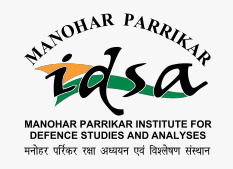NYT ran an ignorant editorial attacking India’s NSG claims
June 5, 2016
In a partisan and condescending editorial (No Exceptions for a Nuclear India, June 4, 2016) on India’s application for membership of the Nuclear Suppliers Group (NSG), The New York Times has written: “Membership would enhance India’s standing as a nuclear weapons state, but it is not merited until the country meets the group’s standards.”
And what does Team NYT want India to do? “India has… not accepted legally binding commitments to pursue disarmament negotiations, halt the production of fissile material for nuclear weapons and not test nuclear weapons.”
This is not the first time that NYT has been unfairly critical of India’s efforts to enter the NSG. In early-July 2014, in a similar editorial, NYT had written: “If India wants to be part of the Nuclear Suppliers Group, it needs to sign the treaty that prohibits nuclear testing, stop producing fissile material, and begin talks with its rivals on nuclear weapons containment.” NYT is consistent but factually wrong on all three counts.
At that time, the newspaper had based its criticism on a report by IHS Jane’s – a US-based research group – that India was in the process of enhancing its capacity to enrich uranium – ostensibly to power the nuclear reactors on the INS Arihant and future SSBNs, but much in excess of the requirement. This was said to be causing anxiety to the Pakistanis and had raised the spectre of an arms race in southern Asia.
It is obvious that the editorial writers understand neither the background to nor the present context of India’s nuclear deterrence. As stated in a letter written by then prime minister Atal Bihari Vajpayee to US president Bill Clinton after India’s nuclear tests at Pokhran in May 1998 (the letter was leaked to the media by the White House), the primary reason for India’s acquisition of nuclear weapons was the existential threat posed by two nuclear-armed states on India’s borders, with both of which India had fought wars over territorial disputes.
The China-Pakistan nuclear and missile nexus, including the clandestine transfer of M-9 and M-11 missiles, nuclear materials and technology from China to Pakistan, has irrevocably changed the strategic balance in southern Asia. It has enabled Pakistan to neutralise India’s superiority in conventional forces and wage a proxy war under the nuclear umbrella.
Since then, the nuclear environment in southern Asia has been further destabilised. China’s ASAT test, BMD programme, efforts aimed at acquiring MIRV capability and ambiguity in its “no first use” (NFU) commitment are causes for India’s concern.
Similarly, Pakistan is engaged in the acquisition of “full spectrum deterrence” capability, including tactical nuclear weapons (TNWs), which invariably lower the threshold of use. Pakistan has stockpiled a larger number of nuclear warheads (110 to 120) than India (90 to 100) and is continuing to add to the numbers as it has been given unsafeguarded nuclear reactors by China. Mujahideen attacks on Pakistan’s armed forces have led to the apprehension that some of Pakistan’s nuclear warheads could fall into jihadi hands.
The 123 Agreement signed by India and the US in 2008 as a follow up to the civil nuclear agreement of July 2005 enabled India to gain an exemption to its nuclear weapons facilities and stockpiles of nuclear weapons fuel from inspections by the International Atomic Energy Agency (IAEA).
India has agreed to bring 14 nuclear power reactors under international safeguards. Eight military facilities, including reactors, enrichment and reprocessing facilities, will remain out of the purview of IAEA safeguards. India is at liberty to set up additional military facilities using unsafeguarded materials if these are considered necessary.
India has been a responsible nuclear power and has a positive record on non-proliferation. India has consistently supported total nuclear disarmament and is in favour of negotiations for the Fissile Material Cut-off Treaty (FMCT).
Incidentally, it is Pakistan that is holding up the FMCT. For both technical and political reasons, it is important for India to keep its option to conduct further nuclear tests open; hence, it cannot sign the Comprehensive Nuclear-Test Ban Treaty (CTBT) at present even though it has voluntarily declared a moratorium on nuclear tests. Last week India joined the Hague Code of Conduct (HCoC) against Ballistic Missile Proliferation.
Non-proliferation ayatollahs should channelise their efforts towards identifying and shaming the real proliferators. Influential newspapers like NYT should review the progress made by the P-5 nuclear weapons states (NWS) on the implementation of the commitments made by them during the NPT Review Conferences – RevCon 2010 and RevCon 2015.
These commitments include progress in the implementation of the New Start Treaty; disposal of highly-enriched uranium (HEU) extracted from nuclear warheads; steps towards early entry into force of the CTBT, monitoring and verification procedures and its universalisation; efforts to revitalise the Conference on Disarmament (CD) by ending the impasse in its working, and the immediate start of negotiations on a legally binding, verifiable international ban on the production of fissile material by the way of the FMCT; and measures to strengthen the non-proliferation regime.
Finally, in April 2009, in his first major foreign policy speech, popularly known as the “Prague Spring” speech that won him the Nobel Peace prize, president Barack Obama had committed the US to work towards a world free of nuclear weapons in line with the growing bipartisan consensus so eloquently expressed by Henry Kissinger, George Shultz, William Perry, and Sam Nunn, in their famous 2007 ‘Wall Street Journal’ article. Instead of repeatedly berating India, NYT should enquire how well that commitment is being fulfilled.
The article was originally published in Daily O



